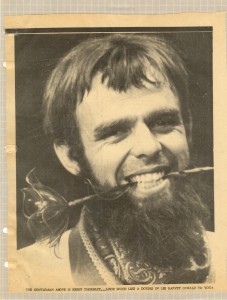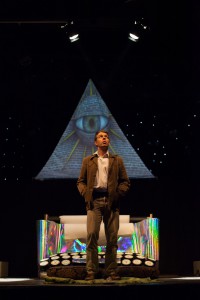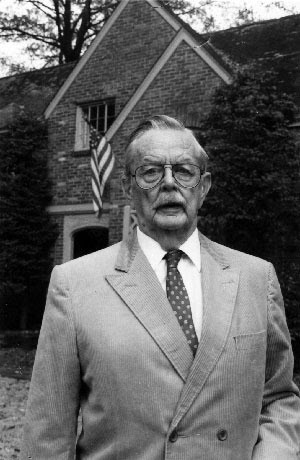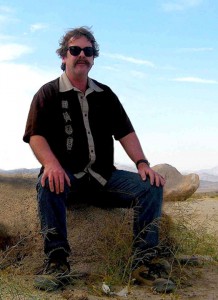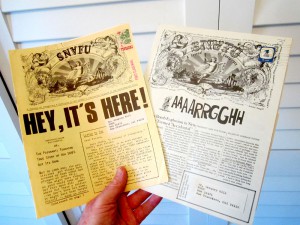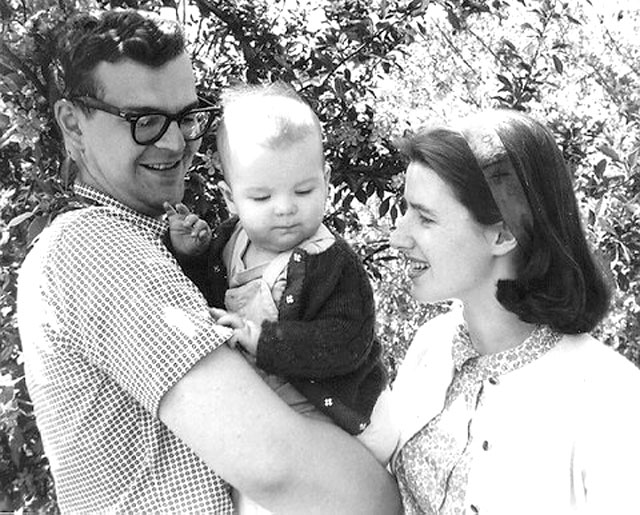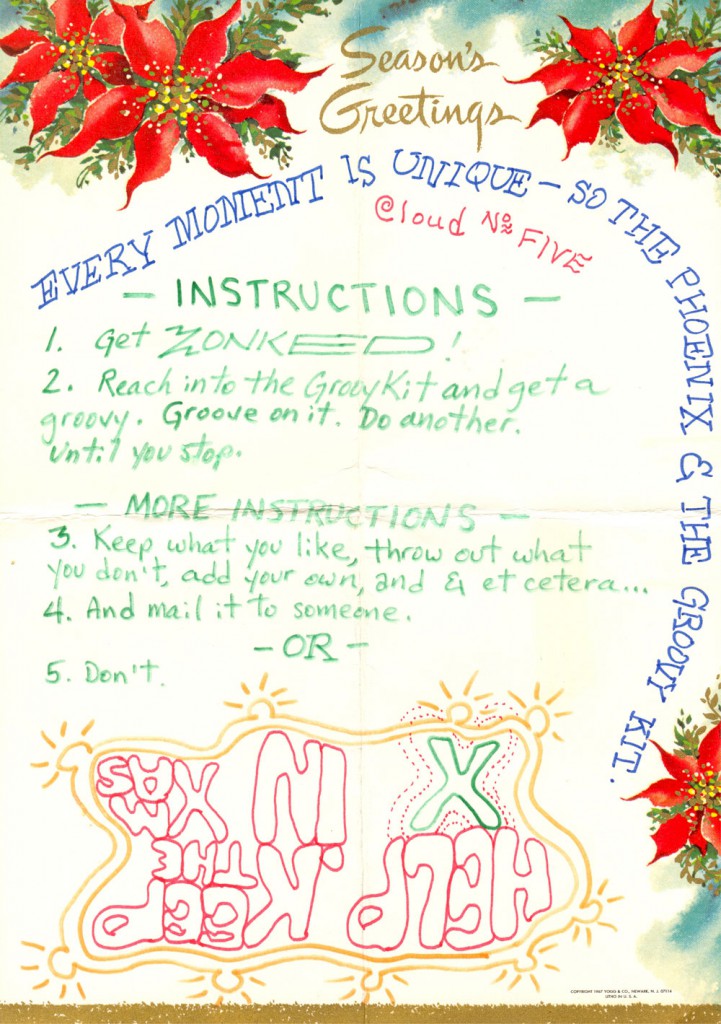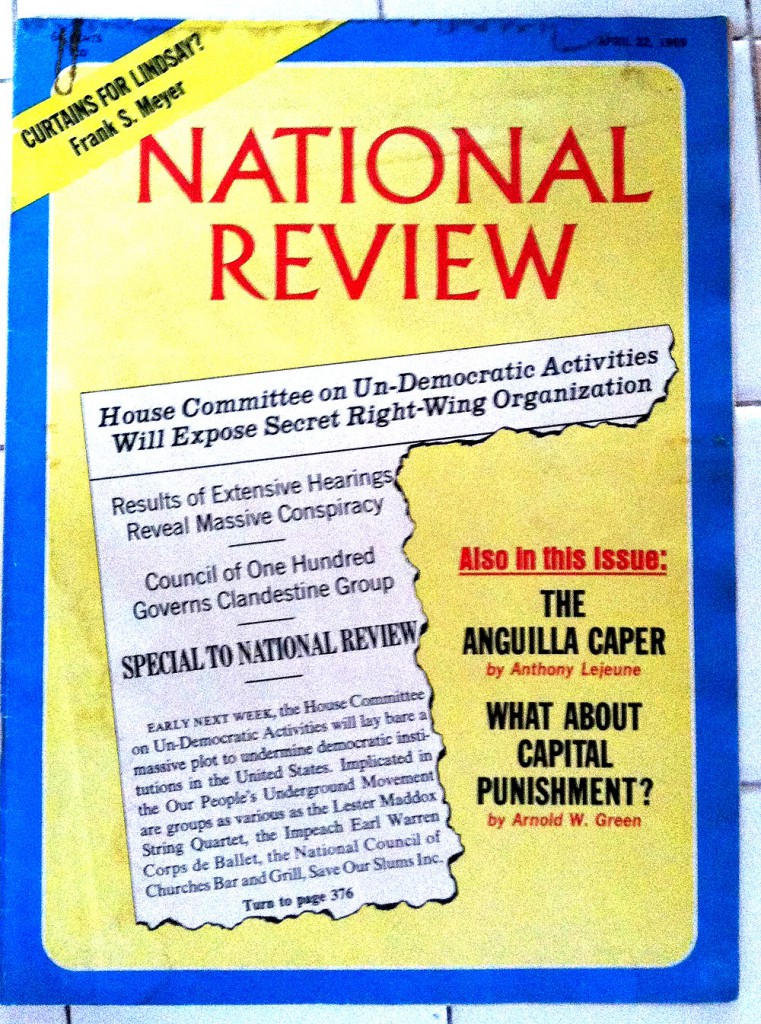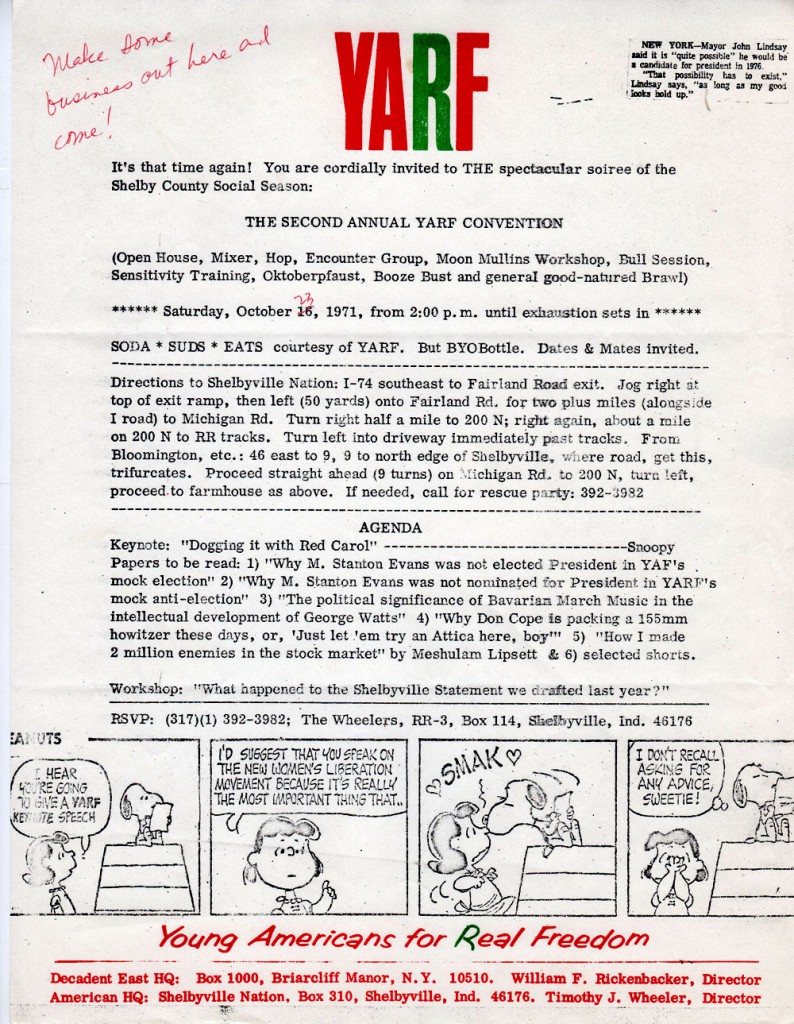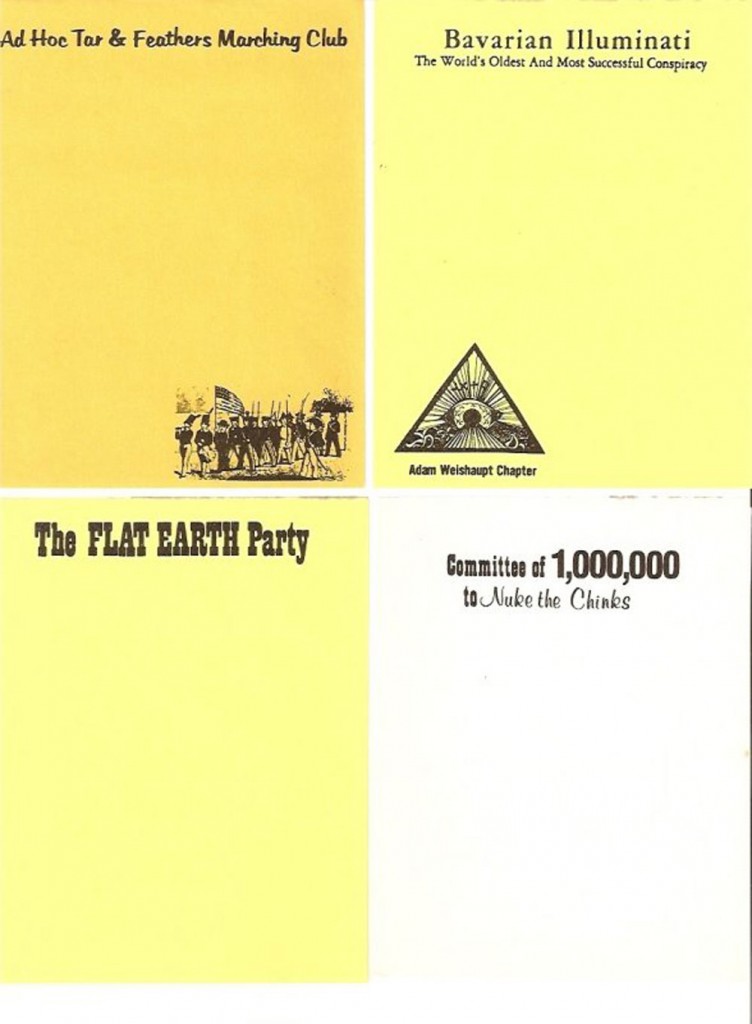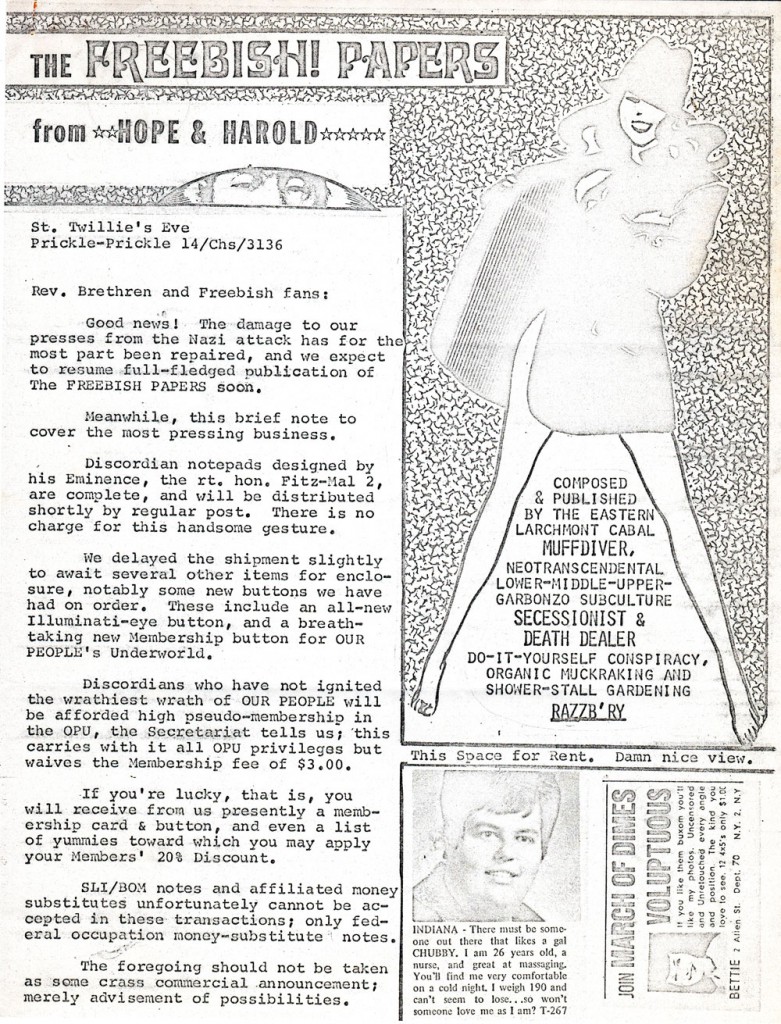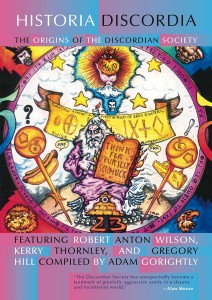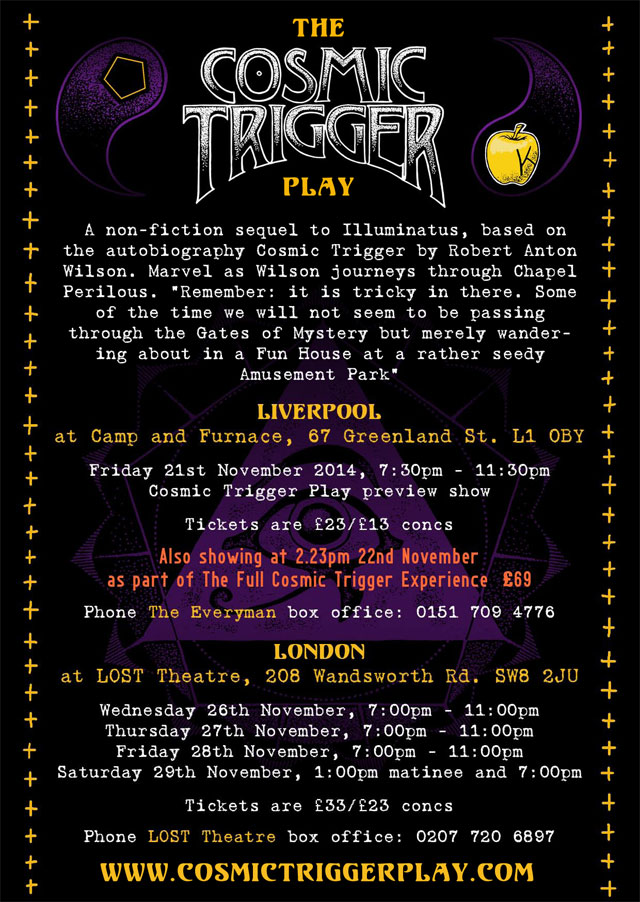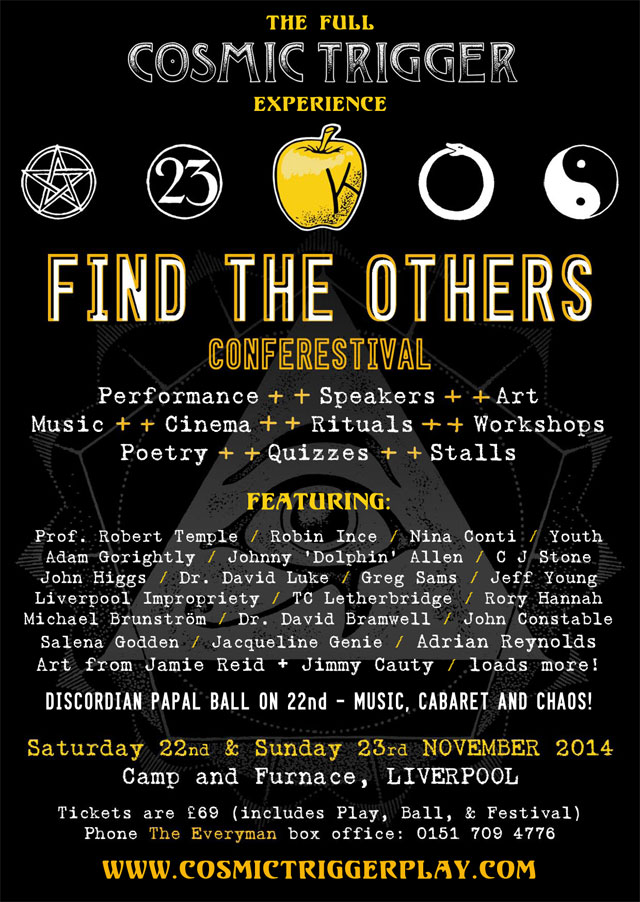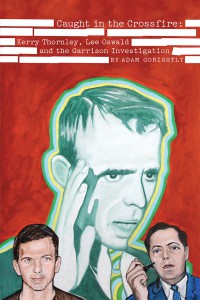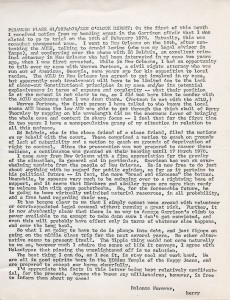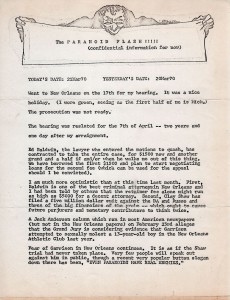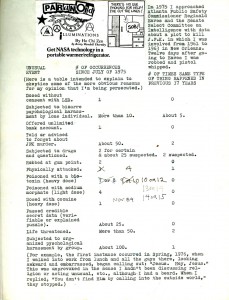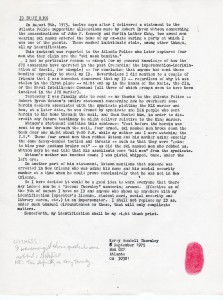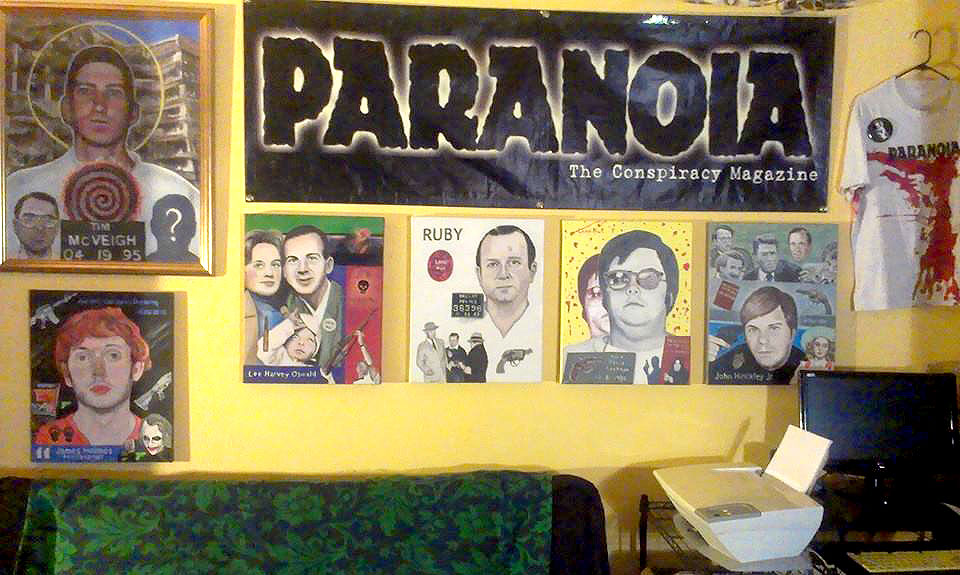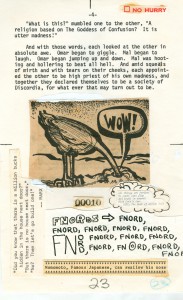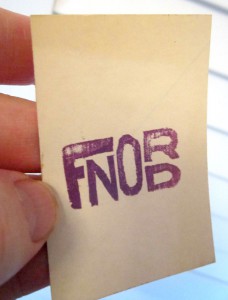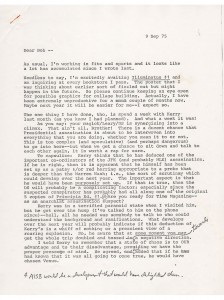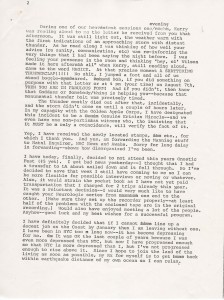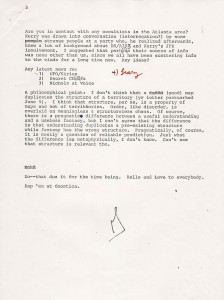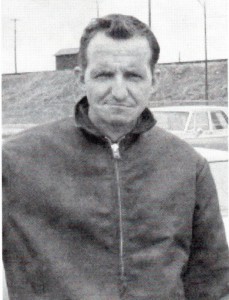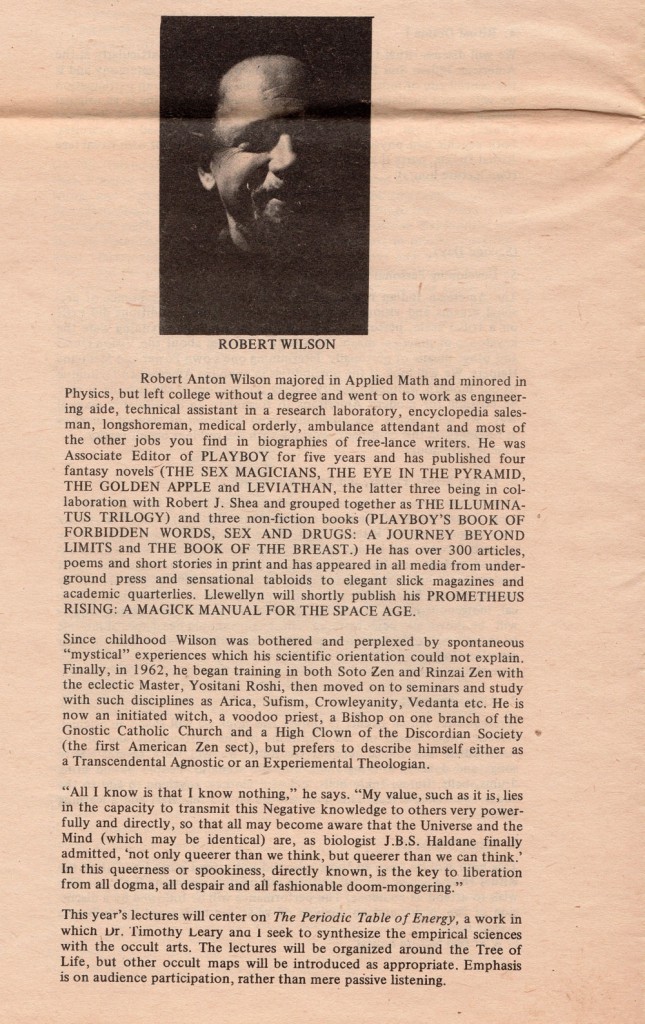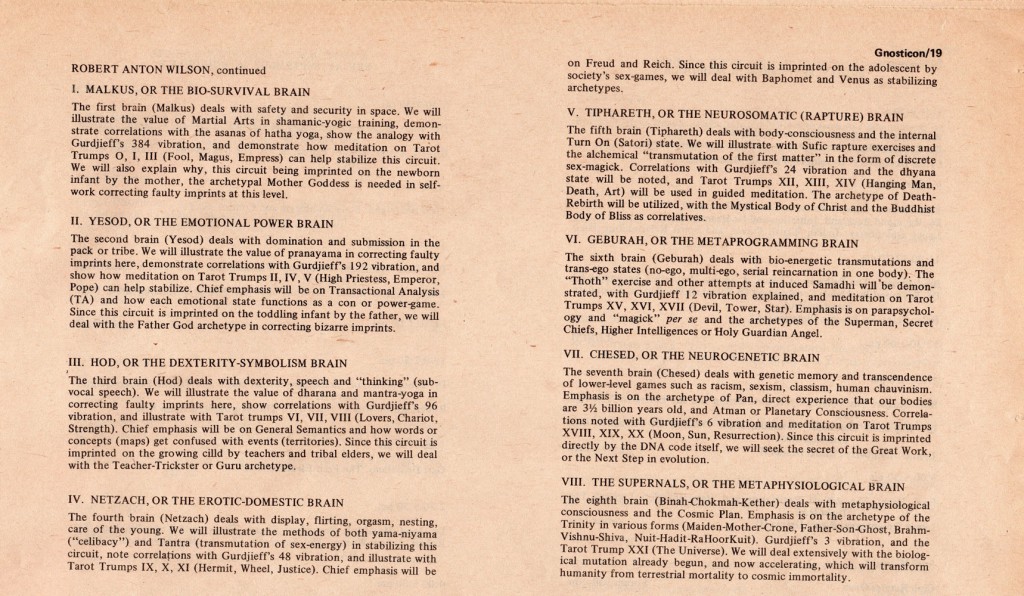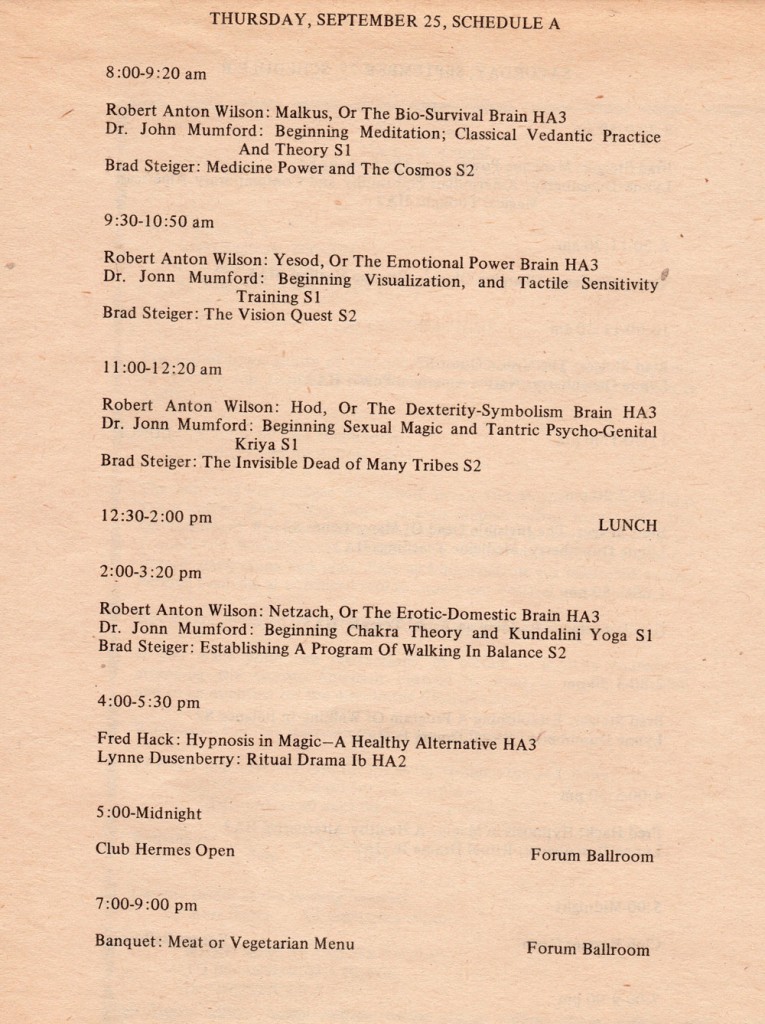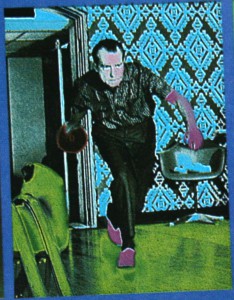
Over the past few years, LOWFI has sponsored a number of esoteric field trips. In early 2009—as a pilgrimage to the Nixon Museum was in the planning stages (in the prospects of summoning Tricky Dicky’s ghost!)—a Canadian-Discordian colleague contacted me (who was unaware of our forthcoming Nixon Museum freakout) and sent a couple of unsolicited Discordian Initiation Rites, which included a ritual dedicated to the legendary Brunswick Shrine, the Whittier, California bowling alley where Kerry Thornley and Greg Hill allegedly discovered Discordianism. It should be noted that the specter of Nixon is an integral part of this Discordian mythos, one of which involves Tricky Dick growing up in Whittier.
In the Principia Discordia the legend of the Brunswick Shrine is related, but I won’t spoil it for you right now, as at the end of this post I’ll share with you the aforementioned Discordian Initiation which relates the vision encountered in a long ago bowling alley that led to Discordianism’s un-maculate conception.
When I interviewed Discordian co-founder Dr. Robert Newport regarding the legend of The Brunswick Shrine, he claimed that no specific bowling alley was the site of the Discordian Society’s birth, and that it had evolved at several different bowling alleys located throughout the greater Whittier and La Habra area in the late 1950s. At the time, this revelation came as a devastating disappointment to your humble author, who—in the course of my research—had planned a grand religious pilgrimage to this envisioned holy site, where I would snap sacred photos and perhaps even fall to my knees before this fabled Mecca of Discordianism. But such was not to be my fate, or so I assumed at the time, because—according to Newport—the choice of a bowling alley really held no mystical significance, other than the fact that bowling alleys stayed open all night and served alcohol. Or at least this is what Newport claimed, explaining that Kerry Thornley, who—during that period looked old for his age—usually bought the beer for the rest of the Discordian gang, which all drank thereof and through holy intoxication summoned forth the chaotic spirit of the Goddess of Confusion and Discord. (So much for Hill and Thornley’s contention that they were busy sipping coffee in a Whittier bowling alley when the revelation of the Goddess Eris struck!) Thus, according to Newport, the revelation of the Goddess had as much to do with alcohol-induced reveries as it did caffeine-inspired visions.

Courtesy of the Discordian Archives.
Nixon’s Museum is located in the town of Yorba Linda, not far from Whittier, the home of this fabled bowling alley/shrine. At the time I had no idea what I was getting into, but—for some inexplicable reason—decided to do a websearch for bowling alleys in Whittier. And in so doing, I stumbled across a flickr page that made me do a double take, depicting—as it did—a retro looking bowling alley that immediately struck a discordant chord, and somehow I felt this was THE PLACE. I noted the name: Friendly Hills Lanes, and said AHA! The clouds then parted and I knew that it was so; that I was gazing upon a photo of the one and only Brunswick Shrine, which I’d previously convinced myself—with the aid of Dr. Newport—had never actually existed. But I now believe it is the real deal: Friendly Hills Lanes = The Brunswick Shrine, and I will present my evidence for you now!
First, as mentioned in Principia Discordia, it was Kerry and Greg (aka Mal-2 and Omar) who bore witness to the mystical experience that transpired at the Brunswick Shrine. So—while there can be no doubt that Bob Newport spent many an hour hanging out with Greg and Kerry in a multitude of SoCal bowling alleys—on the particular night in question (when Eris first appeared and blew their minds), Newport was not in attendance, at least according to the Principia Discordia, The Bible of Discordianism. (And everybody knows that bibles never lie!)
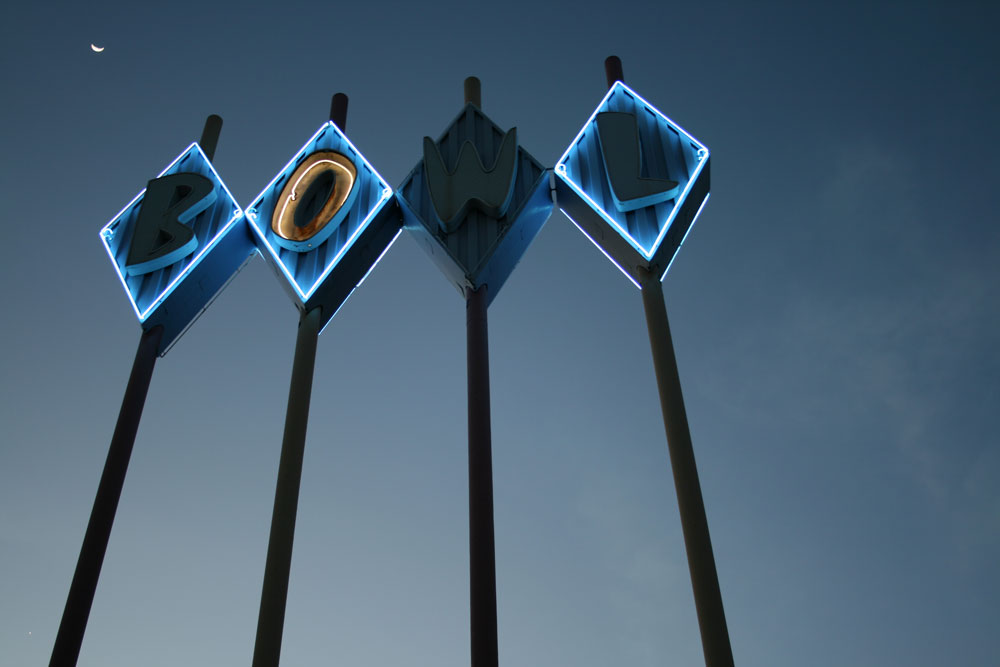
Courtesy of Discordian Archives.
Secondly, in The Prankster and the Conspiracy it is recounted—from stories shared by Kerry’s brother, Dick Thornley—how as lads Kerry used to take his younger brothers to explore the Friendly Hills Development then under construction located nearby their Whittier home. And so we have in Friendly Hills Lanes a bowling alley that fits the timeline (constructed in the late-40s/early-50s) and located within walking distance from where Kerry Thornley grew up. As I was unearthing these amazing Discordian discoveries, I learned from LOWFI Chief Skylaire that not long ago a SoCal preservation society known as The Modern Committee was instrumental in saving the Friendly Hills Lanes “BOWL” sign. Little did they know they were also saving a piece of the Discordian legacy for the ages. As further evidence that Friendly Hills Lanes and the Brunswick Shrine are one and the same, when you walk through the main door the first lane that you see is Number 23! (Coincidence? You decide!)

Courtesy of 23ae.com.
As the revelation hit me that The Brunswick Shrine did indeed exist and was still in operation, I thought it might be cool—after visiting the haunted Nixon Museum—that our LOWFI group afterwards made a pilgrimage to the birthplace of Discordianism. To this end, I ran a Mapquest from the Nixon museum to Friendly Hills Lanes and discovered it would take approximately 23 minutes to drive from one locale to the other! When I floated this idea by Skylaire of visiting said shrine, she was down for it, and so I began contemplating what exactly we could do to consecrate the holy event and then remembered the Brunswick Shrine/Discordian Initiation rite with the Dick Nixon tie-in that had been sent to me by my Canadian/Discordian colleague, Mike Cook. And so it came to be, with me reciting the initiation along with Skylaire playing the role of Eris and throwing fairy dust on the assembled initiates gathered below the neon glow of the BOWL sign. Not to mention my wife squawking the ceremonial rubber chicken 5 times and another participant holding up a sign that said: “DOOM!”
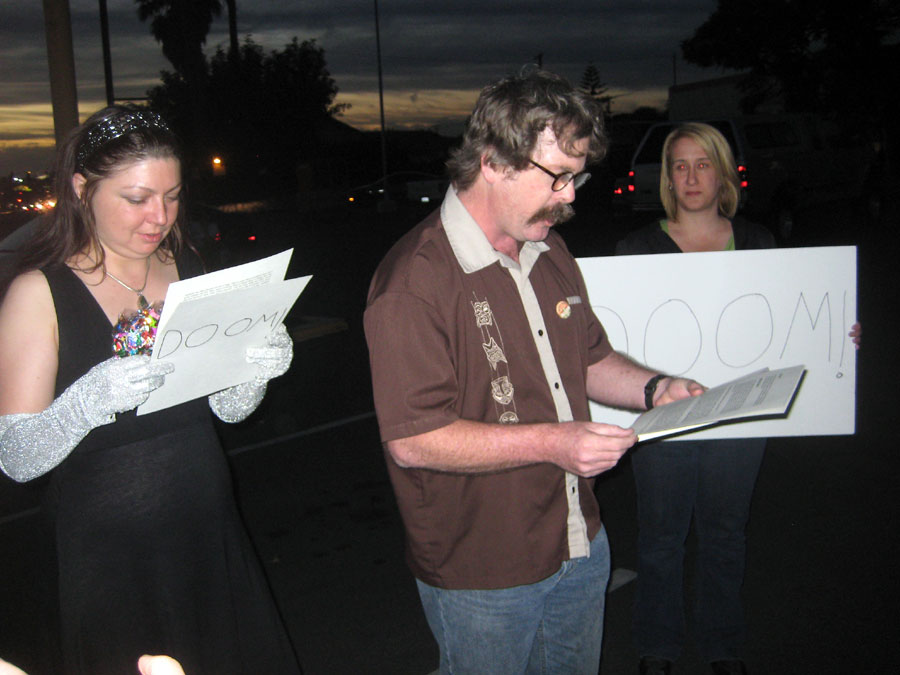
Courtesy of the Discordian Archives.
But once again I’m getting ahead of myself, and I need to mention that prior to this Brunswick Shrine visitation/initiation rite, we did indeed pay tongue-in-cheek homage to the haunted Nixon Museum and I’ll be damned if our entrance ticket didn’t include a photo of a psychedelic Richard Nixon bowling! (We also learned that one of Nixon’s brothers died at age 23!)
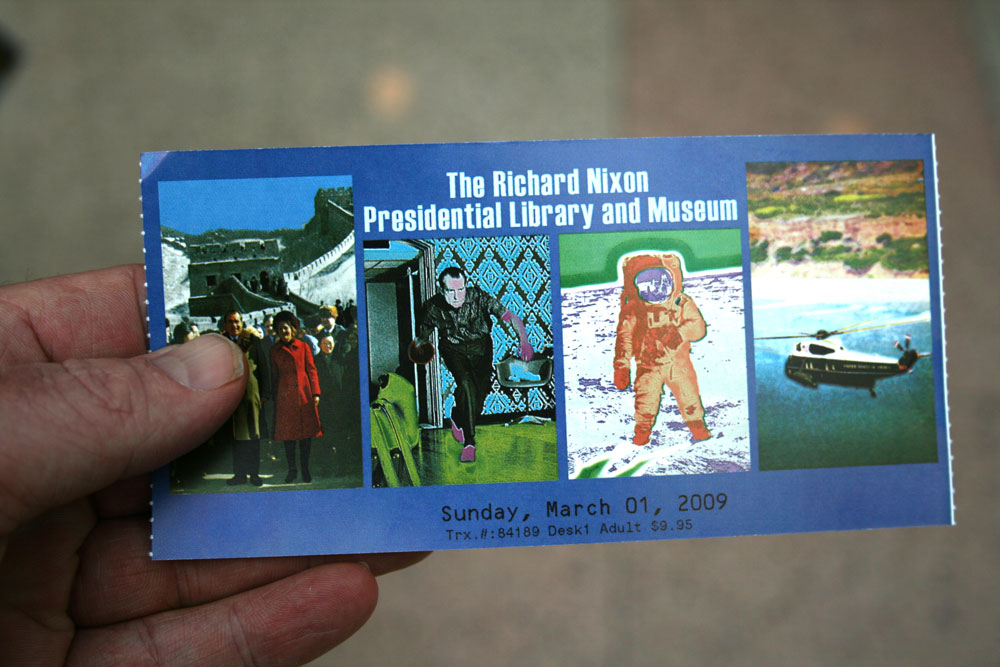
Courtesy of the Discordian Archives.
And now, in its entirety, I present to you the Fifth Degree Discordian Initiation Rite (its narrative lifted from Principia Discordia), which was performed the evening of March 1, 2009, at the one and only Brunswick Shrine.
In the Los Angeles suburb of Whittier there lives a bowling alley, and within this very place, in the Year of Our Lady of Discord 3125 (1959), Eris revealed Herself to The Golden Apple Corps for the first time. In honor of this Incredible Event, this Holy Place is revered as a Shrine by all Erisians. Once every five years, the Golden Apple Corps plans a Pilgrimage to Brunswick Shrine as an act of Devotion, and therein to partake of No Hot Dog Buns, and ruminate a bit about It All. It is written that when The Corps returns to The Shrine for the fifth time five times over, than shall the world come to an end:
IMPENDING DOOM HAS ARRIVED!
And Five Days Prior to This Occasion The Apostle The Elder Malaclypse Shall Walk the Streets of Whittier Bearing a Sign for All Literates to Read thereof: “DOOM”, as a Warning of Forthcoming Doom to All Men Impending. And He Shall Signal This Event by Seeking the Poor and Distributing to Them Precious MAO BUTTONS and Whittier Shall be Known as The Region of Thud for These Five Days. As a public service to all mankind and civilization in general, and to us in particular, the Golden Apple Corps has concluded that planning such a Pilgrimage is sufficient and that it is prudent to never get around to actually going. It was here that the following occurred…
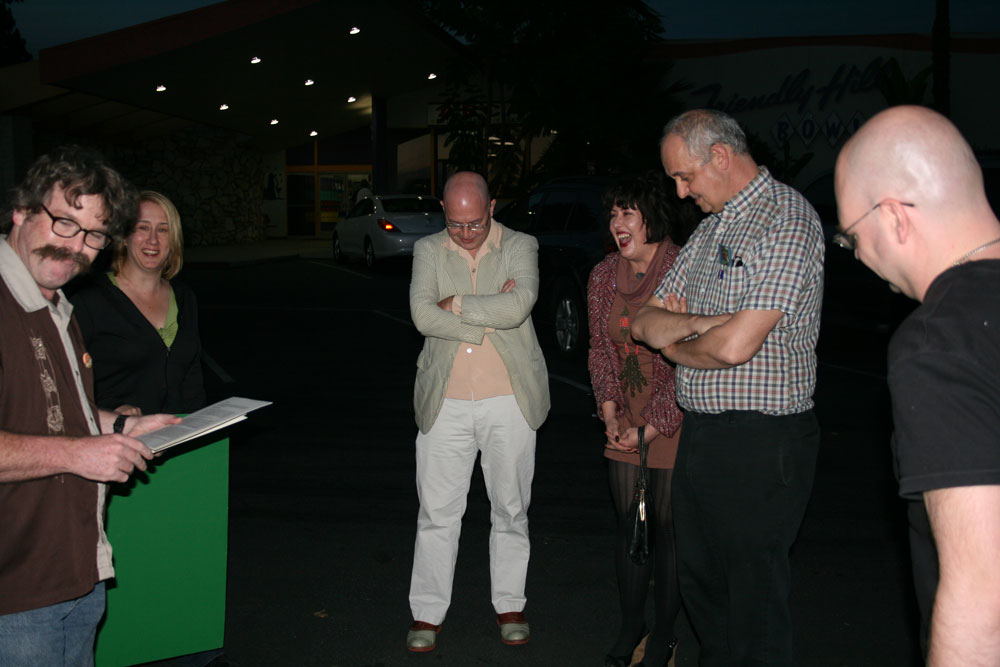
Courtesy of the Discordian Archives.
THE BIRTH OF THE ERISIAN MOVEMENT
Just prior to the decade of the nineteen-sixties, when Sputnik was alone and new, and about the time that Ken Kesey took his first acid trip as a medical volunteer; before underground newspapers, Viet Nam, and talk of a second American Revolution; in the comparative quiet of the late nineteen-fifties, just before the idea of RENAISSANCE became relevant. Two young Californians, known later as Omar Ravenhurst and Malaclypse the Younger, were indulging in their habit of sipping coffee at an all night bowling alley and generally solving the world’s problems. This particular evening the main subject of discussion was discord and they were complaining to each other of the personal confusion they felt in their respective lives. “Solve the problem of discord,” said one, “and all other problems will vanish.” “Indeed,” said the other, “chaos and strife are the roots of all confusion.”
FIRST I MUST SPRINKLE YOU
WITH FAIRY DUST
Suddenly the place became devoid of light. Then an utter silence enveloped them, and a great stillness was felt. Then came a blinding flash of intense light, as though their very psyches had gone nova. Then vision returned. The two were dazed and neither moved nor spoke for several minutes. They looked around and saw that the bowlers were frozen like statues in a variety of comic positions, and that a bowling ball was steadfastly anchored to the floor only inches from the pins that it had been sent to scatter. The two looked at each other, totally unable to account for the phenomenon. The condition was one of suspension, and one noticed that the clock had stopped.
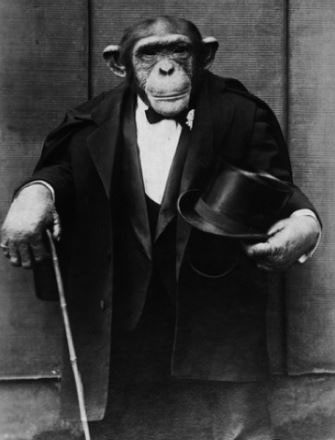
ERIS: I have come to tell you that you are free. Many ages ago, my consciousness left man, that he might develop himself. I return to find this development approaching completion, but hindered by fear and by misunderstanding. You have built for yourselves psychic suits of armor, and clad in them, your vision is restricted, your movements are clumsy and painful, your skin is bruised, and your spirit is broiled in the sun. I am chaos. I am the substance from which your artists and scientists build rhythms. I am the spirit with which your children and clowns laugh in happy anarchy. I am chaos. I am alive, and I tell you that you are free.
During the next months they studied philosophies and theologies, and learned that Eris or Discordia was primarily feared by the ancients as being disruptive. Indeed, the very concept of chaos was still considered equivalent to strife and treated as a negative. “No wonder things are all screwed up,” they concluded, “they have got it all backwards.” They found that the principle of disorder was every much as significant as the principle of order. With this in mind, they studied the strange yin-yang. During a meditation one afternoon, a voice came to them:
ERIS: It is called the Sacred Chao. I appoint you Keepers of It. Therein you will find anything you like. Speak of Me as Discord, to show contrast to the pentagon. Tell constricted mankind that there are no rules, unless they choose to invent rules. Keep close the words of Syadasti: ‘TIS AN ILL WIND THAT BLOWS NO MINDS. And remember that there is no tyranny in the State of Confusion. For further information, consult your pineal gland.
What is this?” mumbled one to the other, “A religion based on The Goddess of Confusion? It is utter madness!” And with those words, each looked at the other in absolute awe. Omar began to giggle. Mal began to laugh. Omar began to jump up and down. Mal was hooting and hollering to beat all hell. And amid squeals of mirth and with tears on their cheeks, each appointed the other to be high priest of his own madness, and together they declared themselves to be a society of Discordia, for what ever that may turn out to be.
Grand Hailing Sign of Awkwardness and Confusion
As a Keeper of the Sacred Chao I now impart to you a secret Discordian sign. This sign originates from when Richard Nixon boarded his helicopter after he had resigned the office of the Presidency of the U.S. Put both hands in the “peace” sign and thrusting them forward on an upward 45 degree angle at the same time speaking the words “I am not a Crook.” Richard Nixon, having unconsciously taken part in our secrets as a Knight of the Five Sided Castle we rightly recognized this as the Grand Hailing Sign of Awkwardness and Confusion. It is only to be given when in of moments of extreme awkwardness or to display the feeling of total confusion, or when blatantly lying.
For more Brunswick Shrine memories, go here:
http://23ae.com/2011/12/the-brunswick-shrine/.
Plan your trip to Friendly Hills Lanes.
